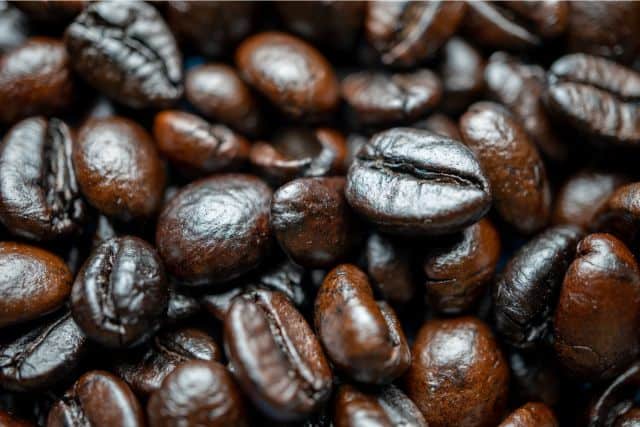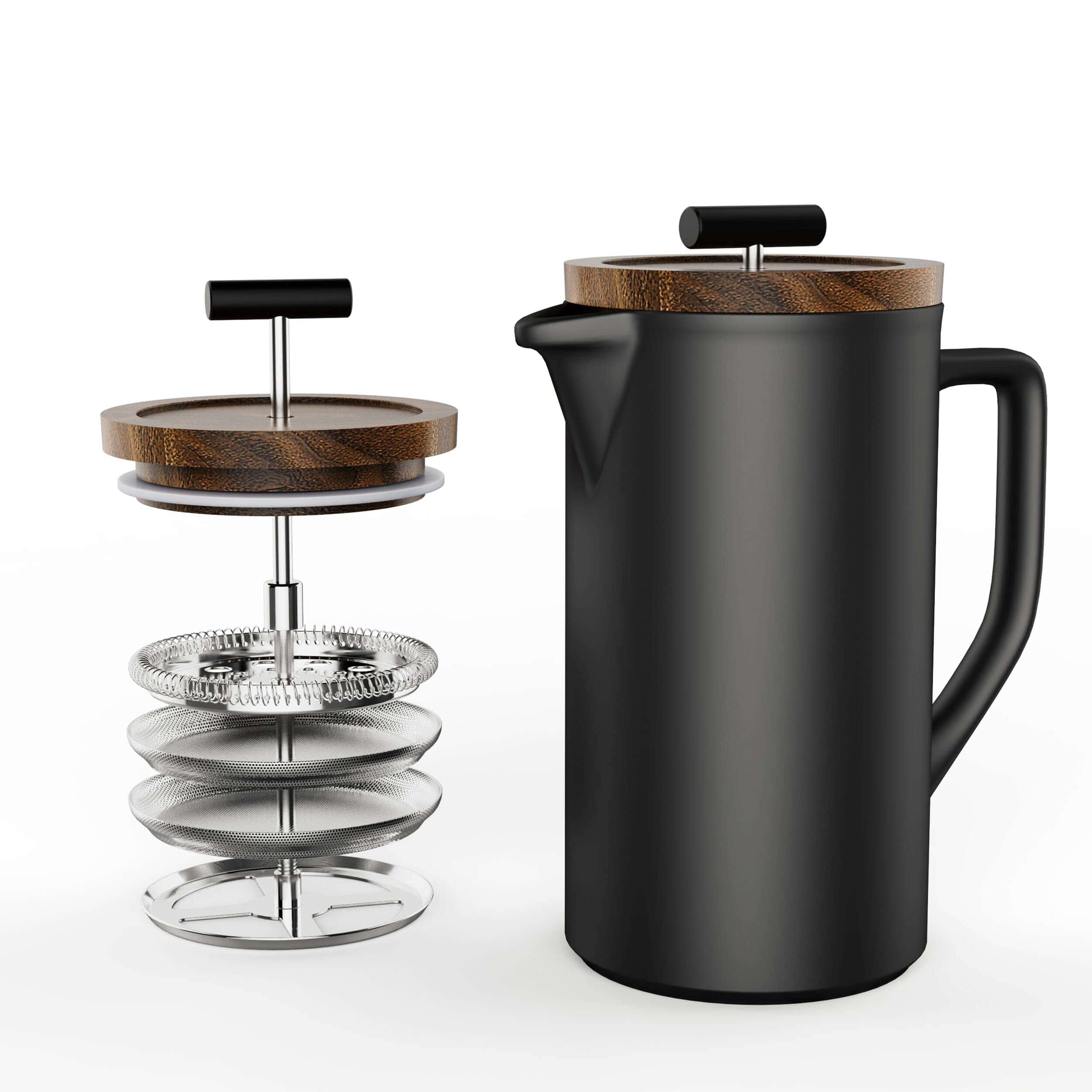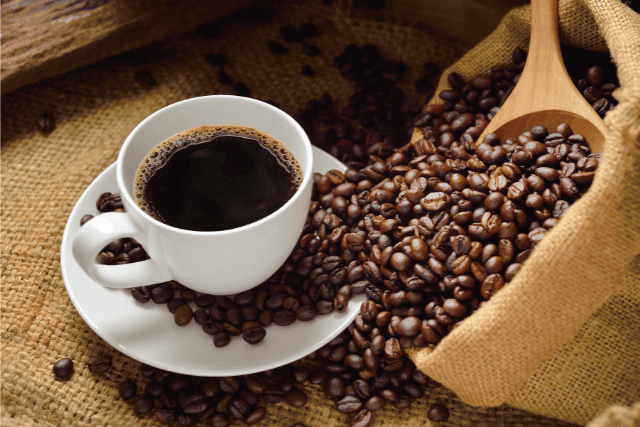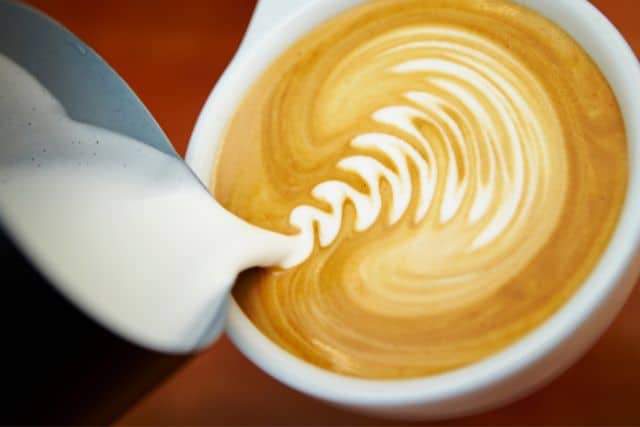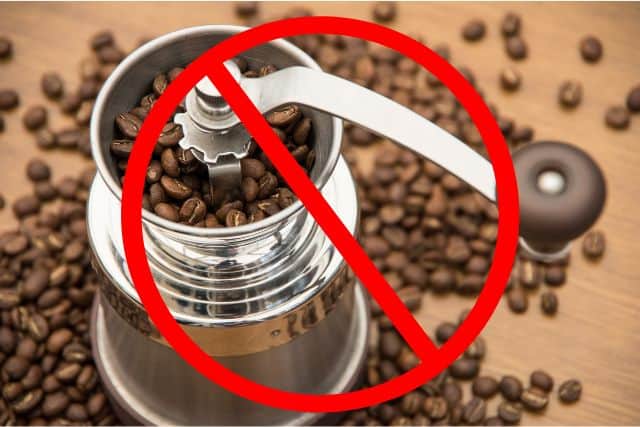Espresso Beans vs Coffee Beans: Is There Really A Difference?
This post contains affiliate links, which means we receive a small commission on qualifying purchases. This does not impact your cost in any way. See details here.

Understanding the Distinction Between Espresso Beans and Coffee Beans
Espresso beans vs coffee beans. They are often used interchangeably, but they have significant differences. While both are derived from the same coffee plant, espresso beans are specifically roasted to produce a concentrated and intense flavor.
On the other hand, coffee beans refer to the more general term used for any beans used to brew regular coffee. This distinction is crucial as it affects the brewing process and the final taste profile of each beverage.
By comprehending the dissimilarity between espresso beans and coffee beans, coffee enthusiasts can better appreciate and enjoy the diverse flavors and characteristics offered by both.
The Types of Coffee Beans: Arabica, Robusta, Liberica, and Excelsa
There are different types of coffee beans available, including Arabica, Robusta, Liberica, and Excelsa. Each type has its own characteristics, flavors, and uses. To provide a professional and informative explanation, I will present a table that showcases the key features of these coffee bean types.
| Type | Flavor | Caffeine Content | Popularity |
| Arabica | Delicate, fruity, and floral | Moderate | Most popular worldwide |
| Robusta | Strong, earthy, and bitter | High | Commonly used in espresso blends |
| Liberica | Unique, woody, and smoky | Low | Rare and specialty bean |
| Excelsa | Tart, fruity, and complex | Similar to Arabica | Less common, used in blends for added complexity |
In addition to the table, it’s important to note that Arabica beans are often considered higher quality and are sought after for their desirable flavors.
Robusta beans, on the other hand, are valued for their higher caffeine content and are commonly used in espresso blends to provide a rich and bold taste.
Liberica beans are relatively rare and possess a distinct smoky flavor profile, making them a specialty choice for coffee enthusiasts.
Excelsa beans offer a unique and complex taste that adds depth to blends.
When exploring the history of these coffee bean types, it becomes evident that Arabica is the oldest and most widely cultivated variety. It originated in Ethiopia and quickly spread throughout the world. Robusta, Liberica, and Excelsa have their roots in different regions and have gained recognition and popularity over time.
Each type contributes to the diverse range of coffee flavors available today, providing coffee lovers with options to suit their individual preferences.
See this article for a more detailed look at Arabica vs Robusta.
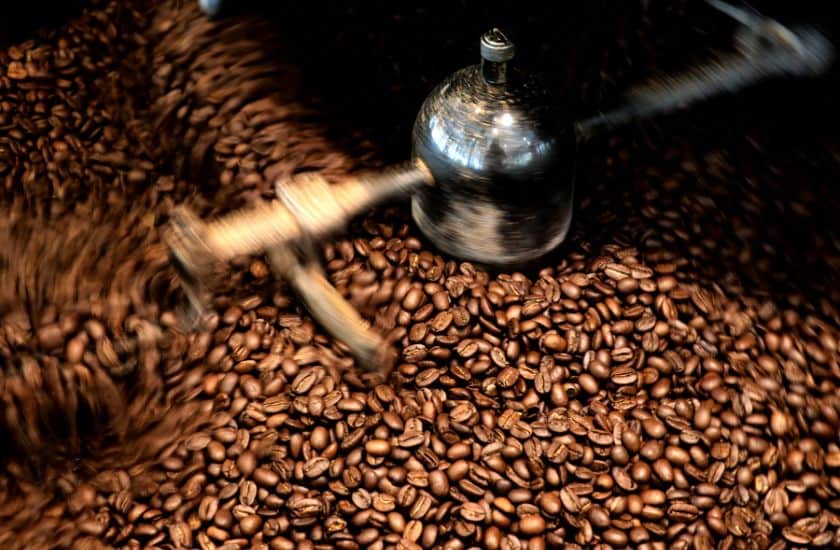
The Role of Roasting: How Roast Profiles Affect Taste and Brewing Methods
Roasting plays a crucial role in determining the taste and brewing methods of coffee. By altering the roast profiles, coffee beans can take on different flavors and aromas. This variation impacts the taste and overall experience of the brewed coffee.
Additionally, the roasting level affects the brewing methods that are best suited for the beans. It is important to note that different coffee beans have varying roast profiles, further influencing the final product.
The role of roasting in shaping the taste and brewing methods cannot be underestimated. Understanding and exploring different roast profiles allows coffee enthusiasts to truly appreciate the complexity and diversity of coffee flavors.
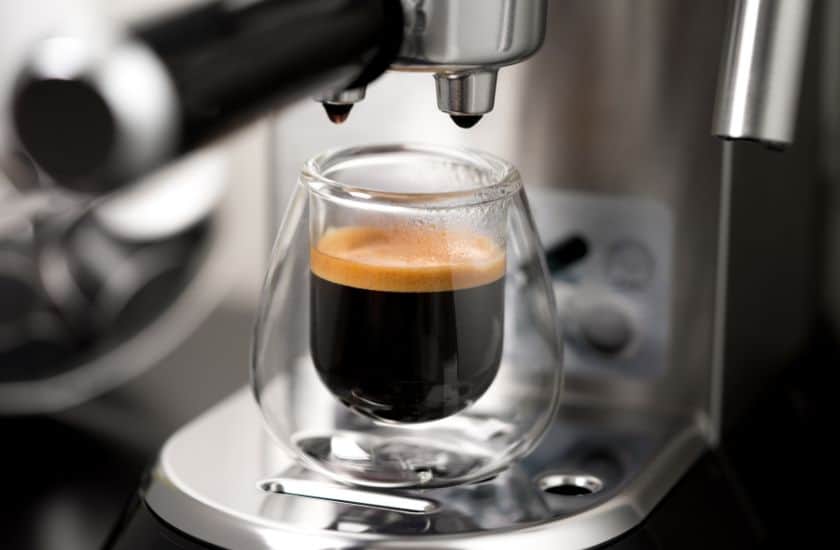
Espresso Coffee Beans: The Characteristics and Benefits
Espresso coffee beans are distinct from regular coffee beans in terms of their characteristics and the benefits they offer.
These beans are specifically roasted to produce a rich and concentrated flavor, making them ideal for brewing espresso. Their small size and dark color are indicative of their intense flavor profile. Additionally, espresso coffee beans have a higher caffeine content compared to regular coffee beans, which provides a stronger energy boost.
The fine grind of these beans maximizes their extraction during the espresso brewing process, resulting in a velvety and full-bodied beverage.
When it comes to benefits, espresso coffee beans are known to provide a quick and powerful pick-me-up, making them a popular choice among coffee enthusiasts who seek a concentrated caffeine boost. Due to their intense flavor, these beans are also often used as a base for creating various coffee-based beverages, such as lattes or cappuccinos.
Espresso coffee beans offer distinct characteristics and benefits that set them apart from regular coffee beans, making them a desirable choice for those seeking a strong and flavorful coffee experience.
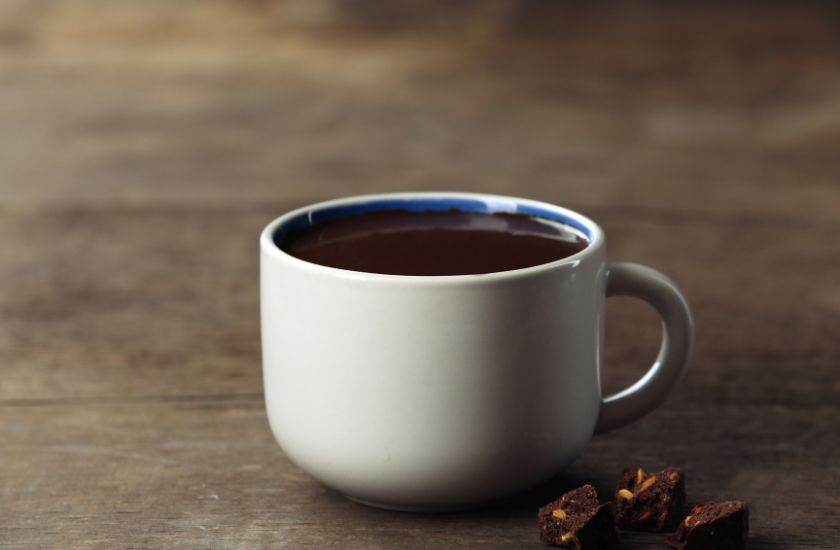
Regular Coffee Beans: Exploring the Different Roast Profiles
Regular coffee beans possess a wide range of roast profiles that can be explored to cater to various taste preferences. Understanding the different variations of roast profiles can enhance one’s coffee experience.
Discovering the diverse options available allows coffee enthusiasts to savor the unique flavors and aromas that each roast brings. Delve into the complexities and nuances of regular coffee beans’ roast profiles to elevate your coffee enjoyment.
Embark on an exploration of the multitude of roast profiles associated with regular coffee beans. Unlock the flavors hidden within each roast, ranging from light and delicate to dark and robust.
By delving into the intricacies of these roast profiles, coffee lovers can find the perfect balance of acidity, body, and bitterness that suits their palate. Dive deeper into the world of regular coffee beans’ roast profiles to uncover your ultimate coffee preference.
In addition to the widely known basic roast profiles, there are lesser-known variations that offer unique characteristics.
These profiles provide an opportunity to experience distinct flavor notes and undertones. Uncover the beauty of lesser-explored roast profiles to add diversity and excitement to your coffee routine.
Embrace the full spectrum of regular coffee beans’ roast profiles and expand your knowledge and appreciation of the wide array of flavors available.
Don’t miss out on the chance to indulge in the remarkable array of regular coffee beans’ roast profiles.
Each profile holds the potential to captivate your senses and deliver an extraordinary coffee experience.
Start exploring the different roast profiles today and unlock a world of rich flavors, enticing aromas, and unparalleled satisfaction. Embrace the journey of discovering the diverse and fascinating realm of regular coffee beans’ roast profiles.
The Art of Coffee Blending: Creating Unique Flavor Profiles
The process of coffee blending is an intricate art form that aims to create distinct and unparalleled flavor profiles. By masterfully combining different coffee beans, roasts, and origins, skilled coffee blenders can produce a diverse range of flavors that cater to varying taste preferences.
This craft involves meticulous experimentation and an in-depth understanding of the unique characteristics of each coffee bean. Through the art of coffee blending, experts are able to unlock new and exciting taste experiences that can surprise and delight coffee enthusiasts.
Conclusion
Enjoying Coffee Your Way: Debunking Coffee Brewing “Rules”
When it comes to brewing coffee, there are often perceived rules and guidelines that dictate how it should be done. However, it’s important to note that these rules can sometimes be misleading and restrictive. In reality, enjoying coffee is a personal experience, and there is no one-size-fits-all method for brewing the perfect cup.
It’s all about finding what works best for you. Experimentation and personal preference should be the driving factors in your coffee brewing journey. While there may be certain techniques and parameters to consider, such as the grind size, water temperature, and brewing time, these should be seen as guidelines rather than rigid rules.
By embracing the freedom to explore and break away from the traditional notions of coffee brewing, you can truly indulge in the art and science behind this beloved beverage. Don’t be afraid to try different brewing methods, sample a variety of coffee beans, and adjust the variables to suit your taste.
Check out these beans that are roasted the same day they ship!
Remember, the goal is to create a coffee experience that brings you joy and satisfaction. Don’t let conventional “rules” limit your creativity and enjoyment. So go ahead, explore the world of coffee brewing, and discover your own unique way to savor the flavors and aromas that this delightful beverage has to offer.
In the end, the key to enjoying coffee your way is to embrace your individuality and preferences. Trust your taste buds, trust your instincts, and create your own coffee brewing rituals.
The world of coffee is vast and diverse, so don’t miss out on the opportunity to craft a brew that perfectly suits your palate.
Start your experimentations, find your favorite beans, discover your preferred brewing method, and savor every sip of your personalized coffee masterpiece.
Remember, there are no “rules” when it comes to enjoying coffee, only endless possibilities.

FAQs
1. Espresso beans vs coffee beans… are they the same?
No, espresso beans and coffee beans are not the same. The main difference lies in how they have been roasted. Both types of beans can be used for brewing, but the roast profile determines the flavor and brewing method.
2. Can I use regular coffee beans for making espresso?
Yes, you can use regular coffee beans to make espresso, but the results might not be as satisfying. Regular beans, especially lighter roasts, won’t provide the same body, flavor, and rich crema that darker roasted espresso beans offer.
3. What is the difference between espresso roast and regular roast?
The difference between espresso roast and regular roast is in the roasting process. Espresso beans are typically roasted longer and have a darker roast profile. This results in a fuller body, lower acidity, and the development of oils that contribute to creating the signature crema of espresso.
4. Espresso beans vs coffee beans… which are better?
Whether espresso beans or coffee beans are better depends on personal preference. If you enjoy a stronger, bolder flavor with a fuller body and crema, then espresso beans might be the better choice for you. However, if you prefer a lighter, more nuanced flavor, then regular coffee beans would suit your taste.
5. Can I use medium roast coffee beans for espresso?
While medium roast coffee beans are versatile and can be used for various brewing methods, they are not ideal for making espresso. The flavor profile and body of medium roast beans may not be strong enough to achieve the desired intensity and crema that espresso requires.
6. What are the advantages of using espresso beans vs coffee beans?
Using espresso beans instead of regular coffee beans can provide a stronger, bolder flavor with a fuller body. The longer roasting process of espresso beans unlocks the natural oils in the beans, resulting in the development of crema and a more pronounced taste. Additionally, espresso beans are specifically designed for use in espresso machines, ensuring optimal extraction and the best possible espresso shot.
